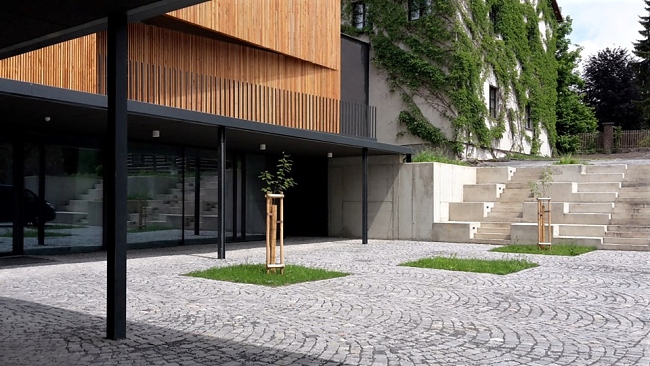
The new climbing exhibition in Turnov has included a century-old painting
 |
Turnov (Semilsko) – The new exhibition on climbing in Turnov features the more than one hundred-year-old painting "The Slaughter of the Saxons under Hrubá Skála". A pair of climbers ascends one of the rocks of this large work, created by Mikoláš Aleš and academic painters Vojtěch Bartoněk, Karel Vítězslav Mašek, and Václav Jansa. This involves videomapping, which can be turned off without harming the painting, yet reactions vary. Some like it, while others consider it a desecration of the work, said one of the curators of the new exhibition, David Marek, to ČTK today.
The monumental oil painting measuring ten by 8.5 meters has been hanging in the Museum of the Bohemian Paradise since 1974. It has remained in place throughout the building's reconstruction during which the new exhibition was created. To protect it, it was concealed by wooden framing. The new exhibition was literally built around it, and the view of the painting, which is among the largest in Europe, is not disturbed at all. "Its incorporation into the new exhibition is a beautiful example of how to connect original museum exhibits with new content," said governor Martin Půta (Mayors for the Liberec Region).
The exhibition "Climbing - From the Bohemian Paradise to the Peaks of the World" is unique within the Czech Republic. Preparation for it has been ongoing since 2013. It has been created thanks to a joint project with the German town of Bad Schandau, co-financed by the Czech-Saxon cross-border cooperation program. "Where else but in Turnov should a similar exhibition be created? It is from here that a number of world-famous climbers originate," added regional councilor for culture Květa Vinklátová (Mayors for the Liberec Region). According to her, the new exhibition cost 40 million Czech crowns, of which five percent was covered by the region, ten percent by the state, and the rest by the European Union.
"It is the largest project that the museum has realized in its more than 130-year history, both in terms of scope and financial demand. It is unique not only for its architectural solution but also for its content. I perceive the whole project as a repayment of a debt that historians and museum staff owe to this enormous phenomenon (climbing), which has a tradition of over a century in our region," added museum director Vladimíra Jakouběová. She noted that it is also important for the museum that, alongside the exhibition itself, a new museum collection is being created, which is quickly growing thanks to public interest.
On the occasion of the opening of the new exhibition, representatives of the executive committee of the Czech Mountaineering Association and the Agency for Nature Conservation and Landscape Protection of the Czech Republic signed a cooperation agreement today. "Climbers and nature conservation simply belong together. Certain restrictions are sometimes necessary for the protection of unique nature, and I am glad that the Czech Mountaineering Association promotes responsible behavior towards nature and cliffs," said agency director František Pelc. According to him, the agreement addresses, among other things, cooperation in the protection of birds that nest on the cliffs, maintenance of access paths, and rock areas. It will also improve mutual information and open up space for further collaboration between both parties.
The Museum of the Bohemian Paradise is one of the oldest regional-type museums in the country, founded in 1886. It has exhibitions focused on mineralogy, the history of Turnov's stonecutting, ethnography, and also a jewelry collection that allows for the display of even the most valuable collection items, such as gold jewelry. It now has a new exhibition on climbing. This is not the last project. "In the previous electoral term, the region purchased the adjacent building from the town of Turnov, where we plan to establish a permanent exhibition of photographer Vilém Heckel, thus completing the entire area," said Vinklátová. Costs are estimated at 14 million crowns.
The English translation is powered by AI tool. Switch to Czech to view the original text source.
0 comments
add comment










